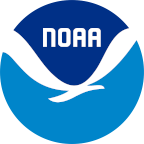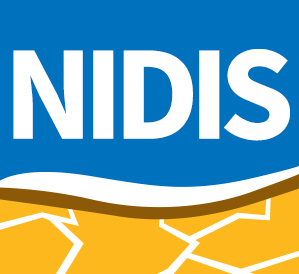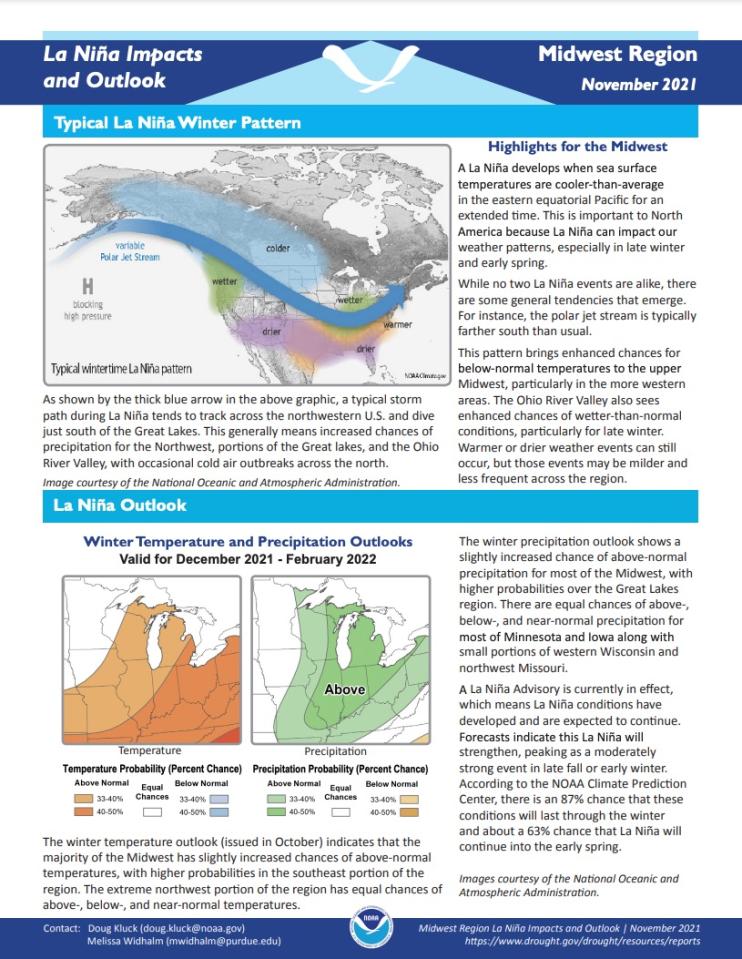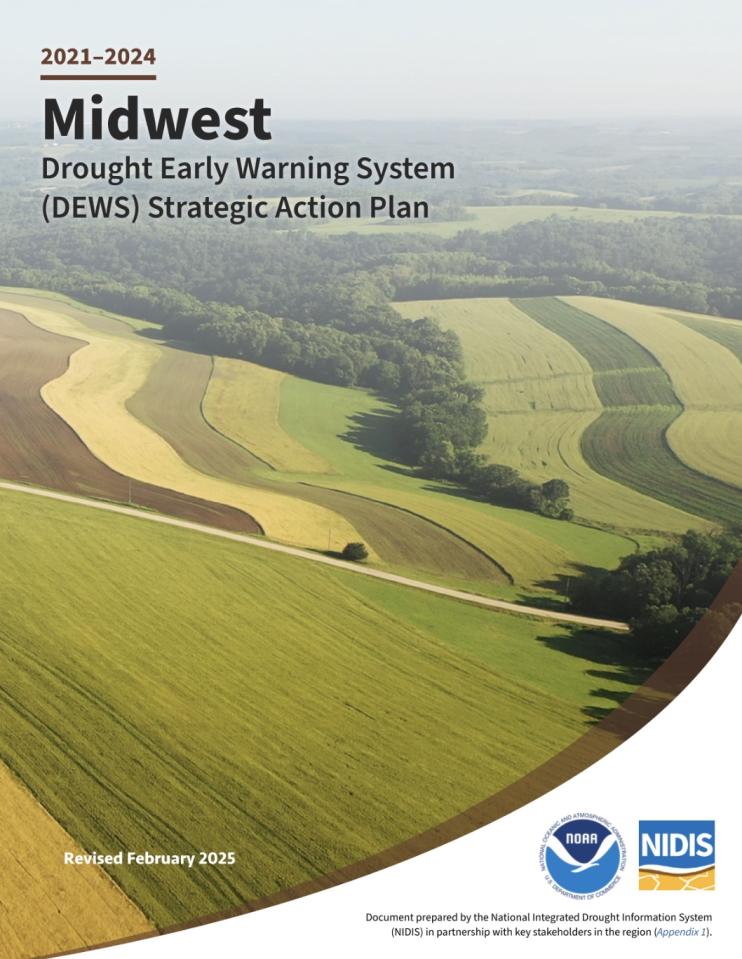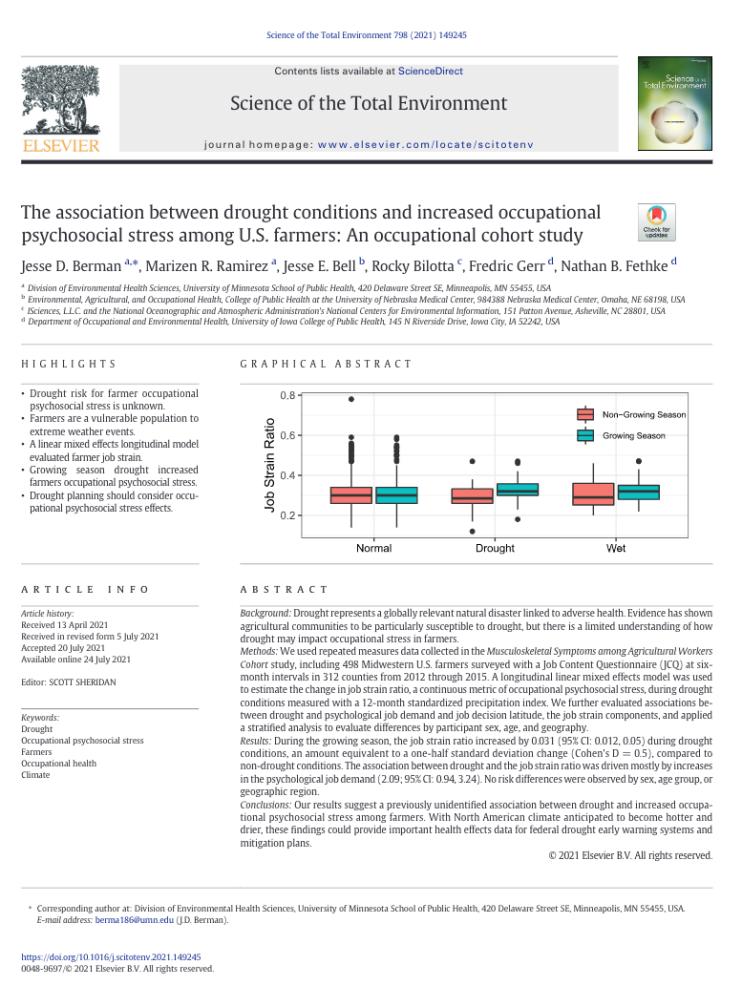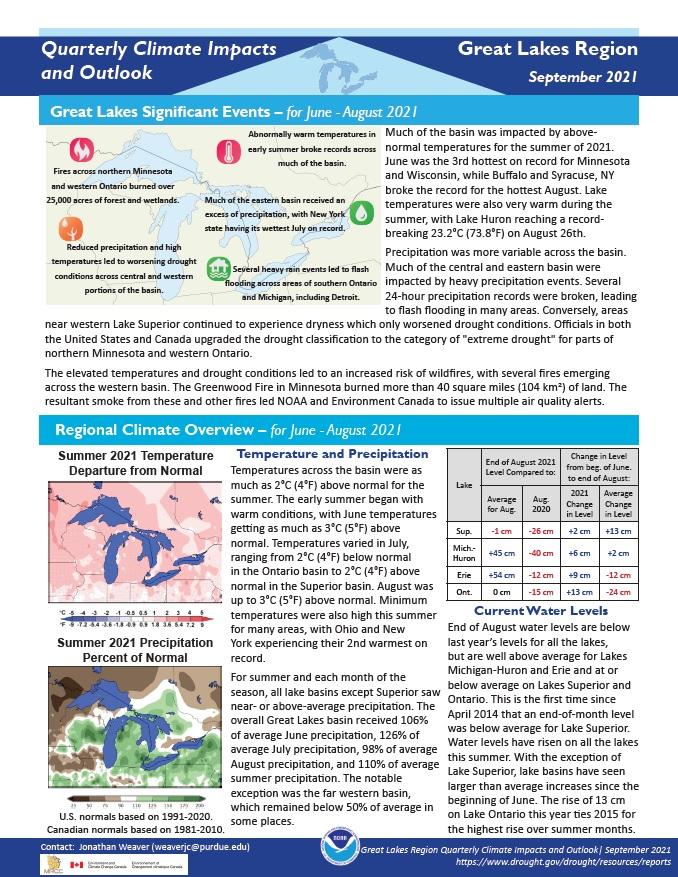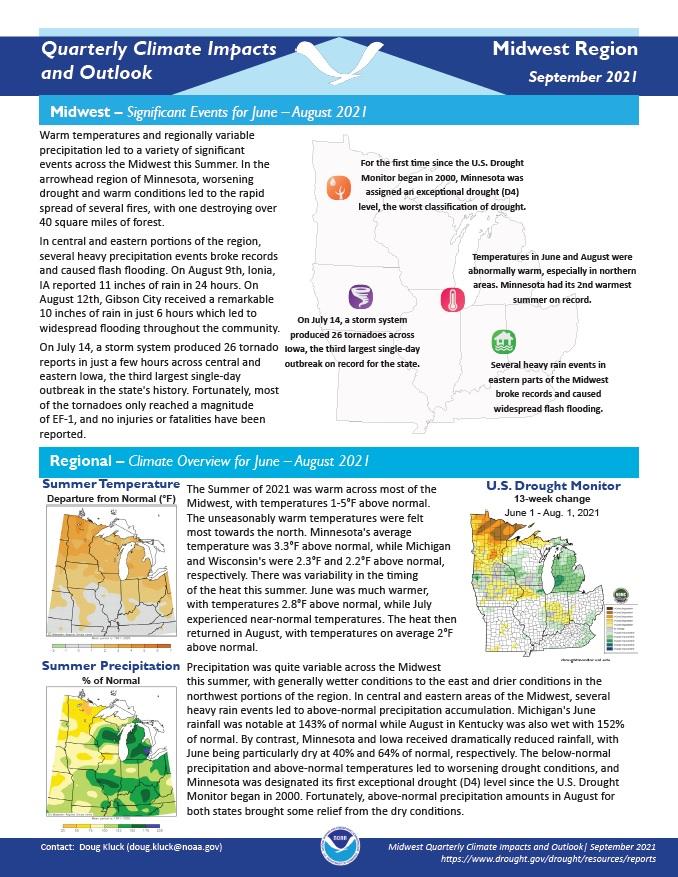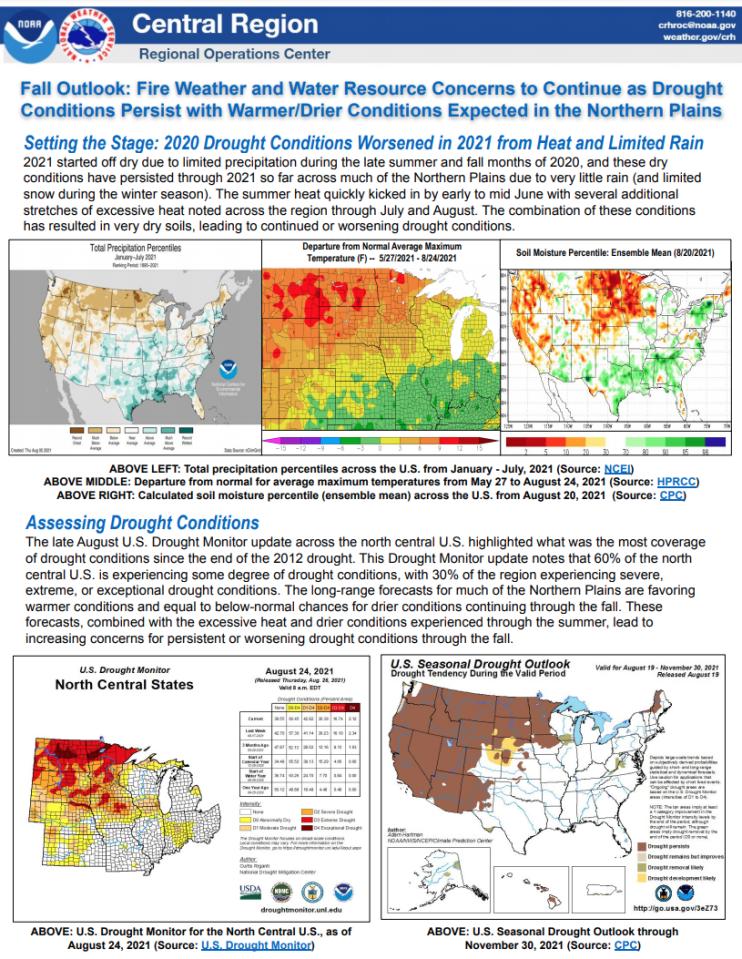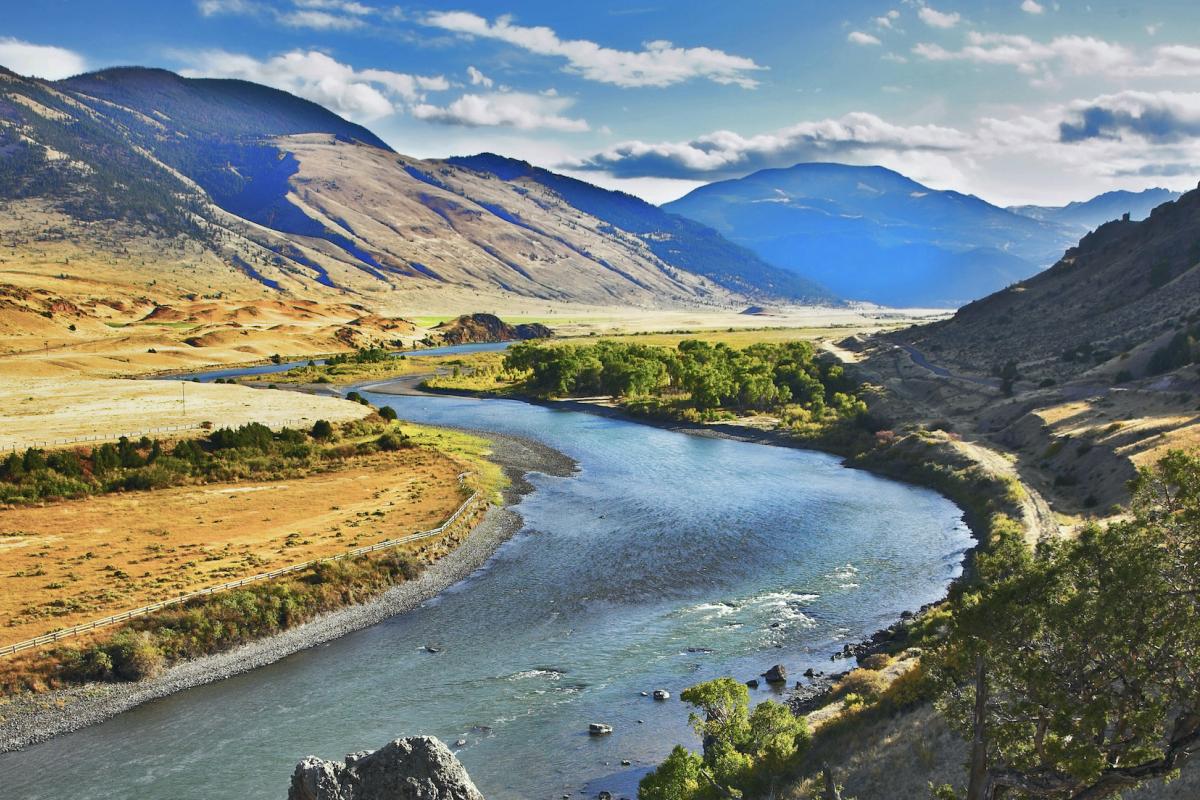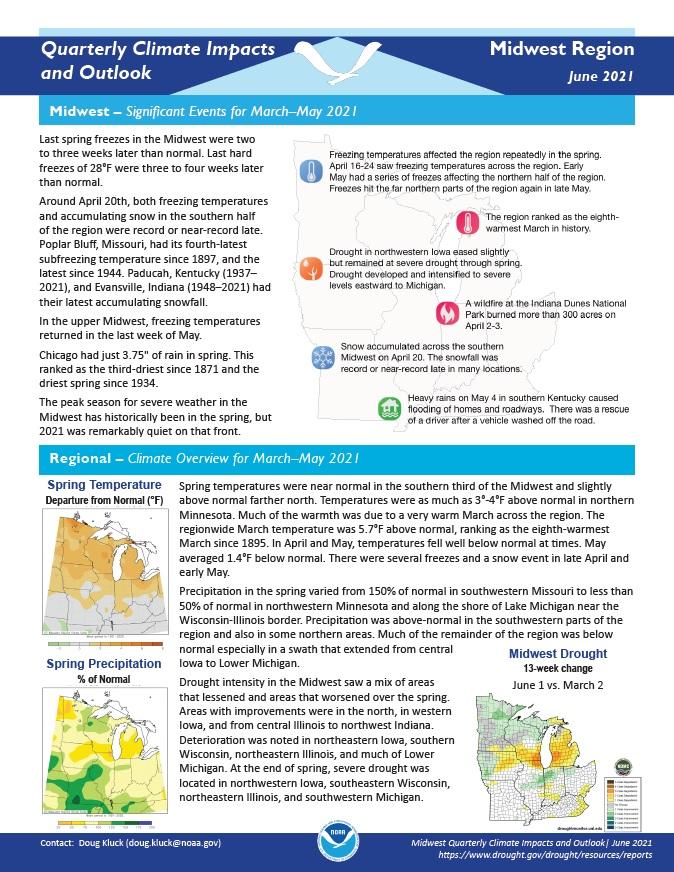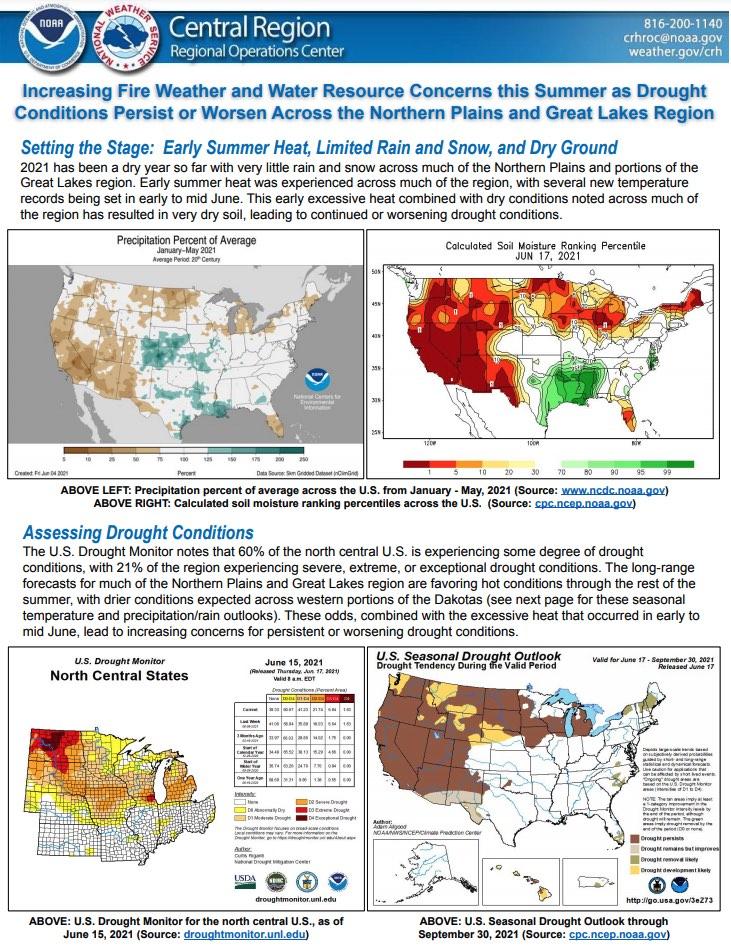For the latest forecasts and critical weather information, visit weather.gov.
This handout provides information on the typical La Niña winter pattern; the La Niña outlook; potential impacts; and comparisons of conditions during previous La Niña years for the Midwest U.S. Updated November 2021.
NOAA’s Regional Climate Services Program created these outlooks to inform the public about climate impacts within their respective regions. Each regional report contains easy-to-understand language, and anyone can access them through the Drought Portal.
The purpose of the 2021–2024 Midwest Drought Early Warning System (DEWS) Strategic Action Plan is to identify priorities, outcomes, and activities the Midwest DEWS plans to undertake together to improve drought early warning and preparedness for the region.
Drought represents a globally relevant natural disaster linked to adverse health. But while evidence has shown agricultural communities to be particularly susceptible to drought, there is a limited understanding of how drought may impact occupational stress in farmers.
Quarterly Climate Impacts and Outlook for the Great Lakes Region for June - August 2021. Dated September 2021.
Temperatures across the basin were as much as 2°C (4°F) above normal for the summer. For summer and each month of the season, all lake basins except Superior saw near- or above-average precipitation.
Quarterly Climate Impacts and Outlook for the Midwest Region for June - August 2021. Dated September 2021.
The Summer of 2021 was warm across most of the Midwest, with temperatures 1-5°F above normal. The unseasonably warm temperatures were felt most towards the north. Precipitation was quite variable across the Midwest this summer, with generally wetter conditions to the east and drier conditions in the northwest portions of the region. In central and eastern areas of the Midwest, several heavy rain events led to above-normal precipitation accumulation.
The National Weather Service Central Region developed 2021 Fall Hazard Outlooks in coordination with NOAA's National Centers for Environmental Information and National Integrated Drought Information System (NIDIS); U.S. Department of Agriculture; High Plains Regional Climate Center; and National Interagency Fire Center's Geographic Area Coordination Centers. This outlook highlights the various Fall hazards that could occur and potential impacts across the Northern Plains.
Quarterly Climate Impacts and Outlook for the Midwest Region for March - May 2021. Dated June 2021.
The National Weather Service Central Region developed 2021 Summer Hazard Outlooks in coordination with the NOAA National Centers for Environmental Information, National Integrated Drought Information System (NIDIS), and National Water Center; U.S. Department of Agriculture; National Weather Service River Forecast Centers; and National Interagency Fire Centers' Geographic Area Coordination Centers. This outlook highlights the various Summer hazards that could occur and potential impacts across the Northern Plains and Great Lakes region.
